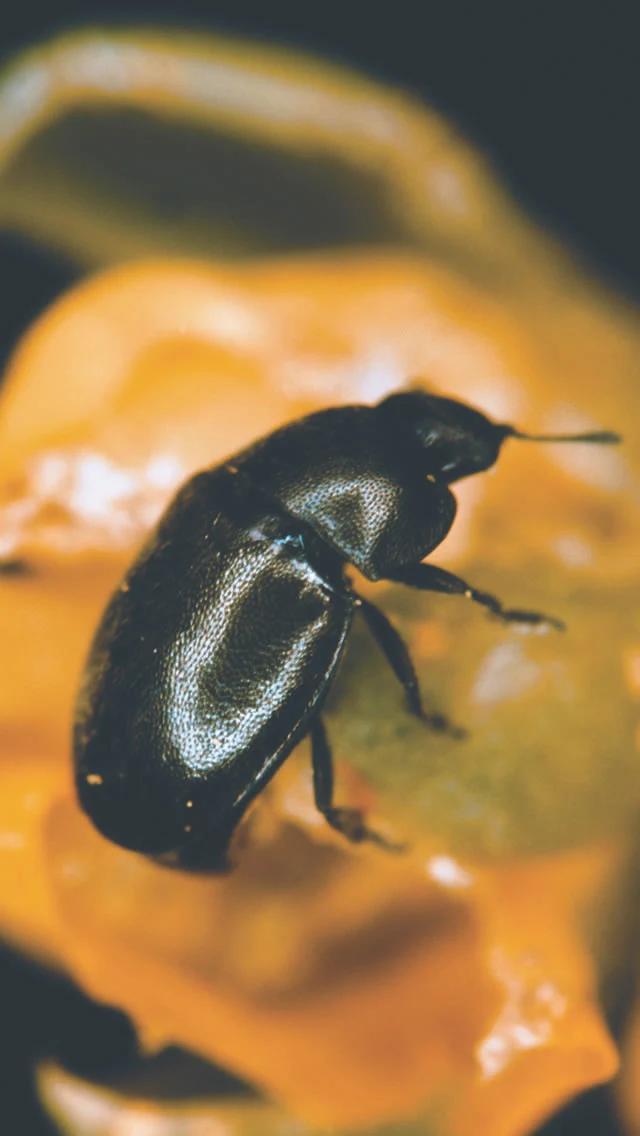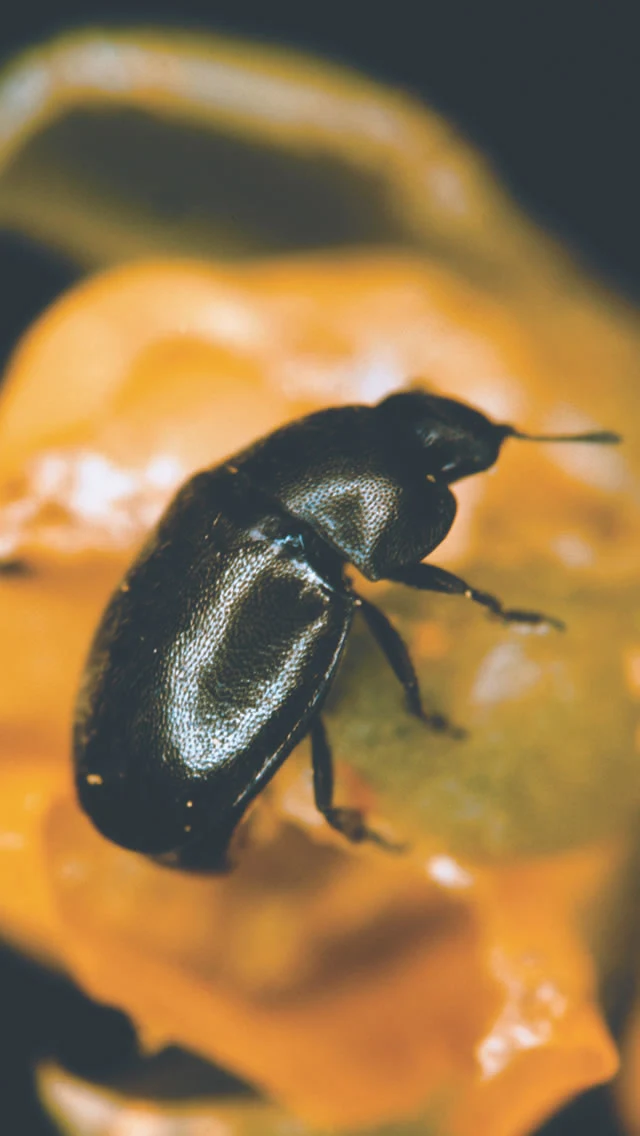
Pollen Beetle
Meligethes aeneus
Identification
The adult beetles are up to 2.5 mm long, metallic greenish to blue/black. The larvae are creamy white, 3-4 mm long, with a brown/black head and 3 pairs of short brown legs. The uppersides of the body of the larvae are lightly coloured with dark brown spots and short bristles.
Symptoms
Both the adults and larvae feed on the developing buds and flowers in search of pollen. Holes can be found in developing buds where the beetles have eaten through the sepals to reach the stamens. This can lead to bud abortion and reduced pod-set.
Life-cycle
Adults emerge during late March through to May. Initial feeding begins close to the overwintering sites and migration into crops occurs on warm days, they fly well when temperatures reach at least 15 °C. Populations are commonly more numerous on the headlands of oilseed rape crops and movement into the main body of the crop will occur with favourable weather conditions. Eggs are laid in flower buds and these hatch after 7-10 days. When fully developed the larvae pupate in the soil and the adults emerge in mid-summer. Autumn flowering brassicas are frequently damaged by a second generation.
Importance
Pollen beetles are widely distributed throughout the UK and feed on the pollen of a wide variety of plants.
Invasion into winter oilseed rape is often too late to cause serious damage and yield loss. Damage at green/yellow bud is more likely to be serious, particularly on backward crops, compared to later feeding on open flowers.
In contrast, spring oilseed rape begins to flower when pollen beetle activity is peaking and is potentially more susceptible to attack. Accordingly, in conventionally bred spring varieties the threshold of beetles per plant is about one third of that for winter oilseed rape.
In a recent HGCA project (RD – 2005 – 3242) it has been suggested that an individual beetle can destroy up to 9 buds or flowers. Calculating the number of excess flowers per m2 (those which do not produce pods), this work suggests that strongly growing crops could tolerate between 7 and 22 beetles per plant.
Some resistance to pyrethroid insecticides has recently been found in the UK, particularly in southern and eastern areas, and severe resistance to pyrethroid insecticides is common on the Continent.
Threshold
Up until 2013, the threshold for treatment, in winter oilseed rape, was 15 beetles per plant and 5 beetles per plant for slow growing backward crops. In spring oilseed rape a threshold of 3 beetles per plant was advised.
New threshold for 2013:
In spring 2013 the HGCA revised this threshold for winter and spring oilseed rape. This is based on the maximum number
of buds each beetle can destroy and the number of excess flowers produced by different rape crops. Low plant populations produce more branches and therefore more flowers.
HGCA revised control thresholds for winter and spring oilseed rape:
If there are less than 30 plants/m2 the threshold is 25 pollen beetles per plant
If there are 30-50 plants/m2 the threshold is 18 pollen beetles per plant
If there are 50-70 plants/m2 the threshold is 11 pollen beetles per plant
If there are more than 70 plants/m2 the threshold is 7 pollen beetles per plant
The number of plants/m2 can be estimated by counting the number of plants within a square foot and multiplying by 11.
Once the crop is in flower, it is no longer at risk. The beetles will be attracted to the flowers in preference to the buds and so can help with pollination.

Adult pollen beetles

Adult pollen beetles feeding on flowers

Adult pollen beetles on flower buds


